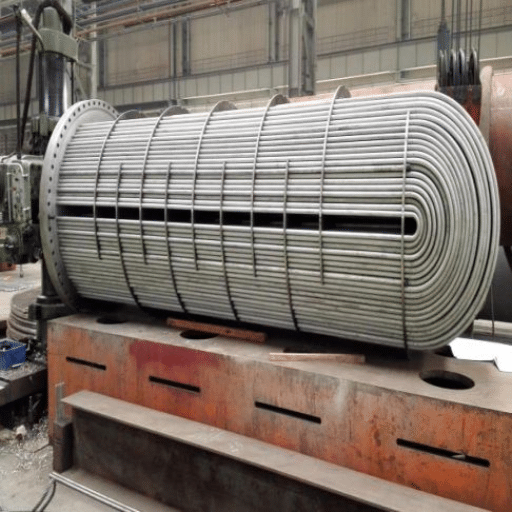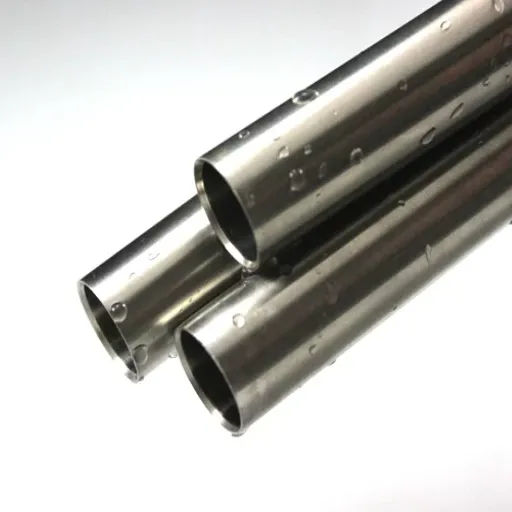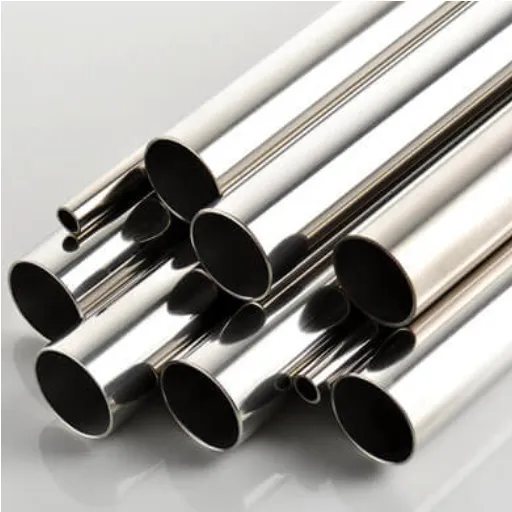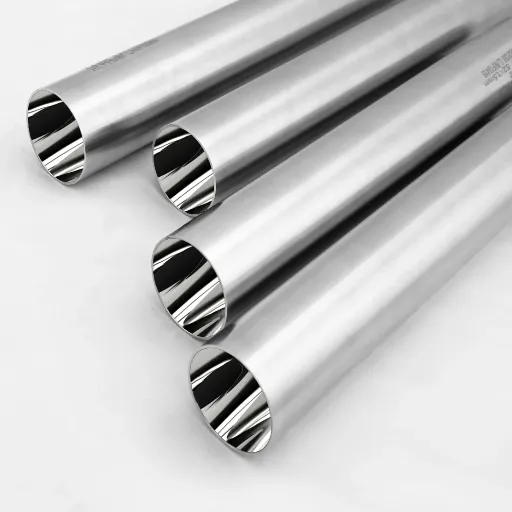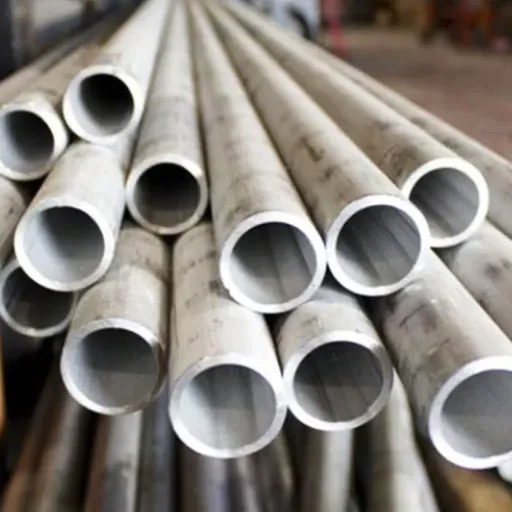Copper is quite an interesting metal, having been put to use by humans for thousands of years, but the question of its magnetic properties always creates curiosity and debate. Is copper ferromagnetic? Well, this question may appear simple, but the answer to it will require delving deeper into the inherent characteristics of copper and how it behaves under certain conditions. This article goes into the various aspects of copper magnetism: its fundamental properties, its behavior with magnetic fields, and the myths regarding its classification. If you are someone with an interest in science or just have an inkling to know more about the complex natures of metals, this article will walk you through all you need to know concerning copper and its magnetic properties. So, stay tuned as we uncover the truth behind the magnetic mysteries surrounding this all-rounder metal.
Introduction to Copper and Ferromagnetism

Key Point: Copper is diamagnetic, meaning it repels magnetic fields weakly rather than attracting them. Ferromagnetism is typical for iron, nickel, and cobalt and causes them to be strongly attracted by magnets. Copper’s atomic structure does not allow it to have unpaired electrons to show any ferromagnetism; hence, it is an excellent conductor of electricity but is totally non-magnetic.
What is Copper?
Copper is a chemical element with the symbol Cu and atomic number 29. Being soft, malleable, and ductile, it is an excellent conductor of heat and electricity. It finds many uses in several industries. In use for thousands of years, Copper was used since prehistoric times to make tools, ornaments, and currency. Copper is mostly extracted from rocks by mining and is commonly found in ores such as chalcopyrite and malachite. Today, copper is used extensively in electrical wiring, plumbing, renewable energy systems, and cutting-edge technological innovations because it is highly resistant to corrosion and recyclable.
Overview of Ferromagnetic Materials
Ferromagnetic substances are materials possessing strong magnetic characteristics, which are of utmost importance in many areas of our advancing technology. Such materials as iron, cobalt, nickel, and their alloys can become magnetized after exposure to a magnetic field. Essentially, it is the combined effect of magnetic moments present in particular areas called domains that gives rise to the strong magnetic character of ferromagnetic materials.
Each ferromagnetic material has a particular temperature, called the Curie temperature, at which it loses its ferromagnetic properties and becomes paramagnetic instead. For instance, iron has a Curie temperature of about 1,043 kelvin (770 degrees Celsius), whereas cobalt has a higher Curie temperature of approximately 1,394 kelvin (1,121 degrees Celsius).
Industrial use of ferromagnetic materials is occasioned by a variety of uses. They are used as cores for electrical transformer, motors, and generators where they provide an efficient channeling and amplification of the magnetic field. On the other hand, ferromagnetic materials are utilized in magnetic storage media where recording is achieved by magnetization.
📊 Industry Insight: In 2023, the global permanent magnet market is projected to reach more than $37 billion by 2030, with a large share contributed by rare-earth ferromagnetic components.
Importance of Magnetic Properties in Metals
Magnetic properties of metals are broadly considered a prominent division in industry, technology, and science, with the properties specifying how the metals interact with magnetic fields, allowing them to be used in various applications. The following are five big reasons why magnetic properties in metals matter:
1. Electric Power Generation
In the energy domains, magnetic properties play an essential role in ensuring that generators and transformers work efficiently. Commonly, soft ferromagnetic materials such as silicon steel are utilized in transformer cores because of their high magnetic permeability and very low energy losses.
2. Data Storage and Memory
Magnetic metals such as cobalt and iron are essential for making hard disks and other memory devices. Metals with strong magnetic properties are used in magnetization to store data in a binary format (0 and 1), hence are vital to modern computing.
3. Electromagnetic Devices
Inductors, solenoids, and relays rely on magnetic materials to exist and function. For instance, ferrite cores in inductors and choke coils are crucial in reducing losses and hence improving efficiency.
4. Medical Applications
These magnetic metals have an important role in medical technologies, including MRI machines. The strong magnetic fields formed by metals such as neodymium guarantee accurate imaging to aid in diagnosis.
5. Sustainable Energy Systems
Permanent magnets fabricated from magnetic materials find increasing application in wind generators and electric vehicles motors. These allow the creation of green technologies and further support the global push towards renewable energy.
Magnetic Properties of Copper

Being diamagnetic, copper has opposite magnetic properties from ferromagnetic metals, such as iron or nickel. This, in fact, means that copper develops a very weak opposing magnetic field whenever it is placed under an external magnetic field. Though copper cannot be compared with ferromagnetic metals in magnetic properties, with respect to conductivity and thermal applications, copper acts as an important metal.
Five Magnetic Properties of Copper
1. Diamagnetism
Copper is a diamagnetic substance having a negative magnetic susceptibility. It weakly repels the external magnetic field.
2. Low Magnetic Permeability
Copper has magnetic permeability roughly equal to that of free space (vacuum), so it cannot suitably be used for applications where strong magnetic action is required.
3. Weak Magnetic Field Interaction
Being without magnetic domains, copper loses magnetization once the external magnetic field ceases.
4. Eddy Current Formation
Being such a good conductor, copper generates eddy currents whenever there is a change in magnetic flux. Eddy currents may, in turn, generate weak magnetic fields that oppose the variation in flux.
5. Non-Magnetic in Normal Usage
Under normal conditions, copper is regarded as non-magnetic, and hence, its suitability comes into play in those environments that need the minimization of interference from magnetic fields, say, for example, electrical wiring or some sensitive electronic equipment.
Understanding Copper’s Non-Magnetic Nature
The question of why copper is considered a non-magnetic metal necessitates an understanding of the atomic structure and the physical properties of copper. Below are five very well-detailed reasons pertaining to the non-magnetic nature of copper:
⚛️ Electron Configuration
Copper has the electron configuration: [Ar] 3d¹⁰ 4s¹. Therefore, copper has completely filled d-orbitals with its partial occupancy on the s orbital. Magnetic properties occur from unpaired electron spins; since copper does not have any unpaired electrons in its atomic structure, it remains non-magnetic.
🔬 Paramagnetic Susceptibility
Copper is extremely weakly paramagnetic in the presence of external magnetic fields; hence, it has close to zero magnetic susceptibility and, therefore, cannot retain any magnetic properties once the external field is removed.
🔷 Atomic Lattice Structure
Being a fairly symmetrical lattice structure [face-centered cubic (FCC)], copper cannot help in aligning the magnetic moments that might have contributed to magnetic behavior.
⚡ Conductivity and Skin Effects
Due to its excellent electrical conductivity, copper generates eddy currents that produce weak magnetic fields while opposing the alternating magnetic field, which further adds to it being referred to as “non-magnetic.”
🌡️ Thermal Effects on Magnetism
Thermal energy present in Cu atoms causes them to vibrate rapidly at ambient temperatures. Any residual alignment of magnetic domains is quickly interrupted by this vibration. This, therefore, further lessens the possibility of copper manifesting magnetic behavior.
Comparison with Ferromagnetic Metals Like Iron and Nickel
Copper is diamagnetic and weakly repels magnetic fields, unlike ferromagnetic metals like iron and nickel, which strongly attract and retain magnetism.
| Parameter | Copper | Iron | Nickel |
|---|---|---|---|
| Magnetism Type | Diamagnetic | Ferromagnetic | Ferromagnetic |
| Magnetic Behavior | Weak repulsion | Strong attraction | Strong attraction |
| Electron Pairing | Fully paired | Unpaired electrons | Unpaired electrons |
| Retains Magnetism | No | Yes | Yes |
| Applications | Electrical conductors | Magnets, tools | Magnets, alloys |
Electron Behavior and Magnetic Properties
Magnetic property manifestation in materials is very much tied intricately to the full spectrum of electron behavior. The various factors and data that contribute to electron behavior and magnetic properties can be enumerated as follows:
1. Electron Spin
In the case of magnetism, an electron’s spin is paramount. Depending on how the alignment is set in a given material, it gains magnetic properties.
📌 Data Example: Substances that contain unpaired electron spins such as iron are very much magnetic, while paired spin-bearing substances such as copper are non-magnetic.
2. Unpaired Electrons
The greater the number of outer-shell unpaired electrons attached to atoms in a substance, the greater the magnetic properties reflected by the substance. Materials exhibiting some ferromagnetism or paramagnetism generally contain more unpaired electrons.
📌 Data Example: Iron has four unpaired electrons and thus proves to be strongly ferromagnetic.
3. Electron Orbital Movement
Orbital magnetic moments are the interaction of orbital electrons in the atom with the magnetic field of the material. This is indeed of paramount importance in compounds.
📌 Data Example: Transition metals like cobalt undergo orbital contributions to magnetism that are fairly significant.
4. Exchange Interaction
The exchange interaction, which is the interaction between adjacent electron spins, causes a particular property in that a material may exhibit either ferromagnetic behavior or antiferromagnetic behavior or even paramagnetic behavior.
📌 Data Example: Ferromagnetic substances such as nickel have a strong exchange interaction, which causes spins to align parallel to one another.
5. Band Structure
Partially filled bands and observed magnetic properties of the electronic band structure are translated through conducting electrons residing in certain bands to accentuate magnetism via a collective behavior.
📌 Data Example: It is the density of d-band electrons in magnetic substances like iron, cobalt, and nickel that is responsible for their particular magnetic properties.
Copper Alloys and Their Magnetic Behavior

Some copper alloys have peculiar magnetic behaviors contingent upon their composition and the interaction of their constituent elements. Copper, in its pure state, is never magnetic owing to electronic factors. Copper alloys can, however, in certain-specific ways, exhibit varying degrees of magnetism. Here are five major copper alloys and their respective magnetic behaviors:
1. Brass (Copper-Zinc Alloy)
Magnetic Behavior: Brass is mostly considered non-magnetic due to the diluting effect that zinc has on magnetic interaction.
📊 Data Example: With typical brass compositions consisting of 70% copper and 30% zinc, its magnetic permeability is very low (~1.05), making it suitable for non-magnetic applications such as electrical connectors.
2. Bronze (Copper-Tin Alloy)
Magnetic Behavior: Mostly non-magnetic although impurities or other elements such as iron might insert a slight degree of magnetism.
📊 Magnetic Characteristics: Bronze alloys could show very weak ferromagnetism in the presence of traces of iron that can be measured under laboratory conditions.
3. Copper-Nickel Alloy
Magnetic Behavior: Copper-nickel alloys are weakly magnetic, although the strength of magnetization generally increases as nickel content increases owing to nickel being ferromagnetic.
📊 Data Example: An alloy with 70% copper and 30% nickel displays a magnetic permeability of slightly more than 1.1, and may be exploited in the building of precision instruments.
4. Beryllium Copper (Copper-Beryllium Alloy)
Magnetic Behavior: Non-magnetic, with excellent resistance to deformation and wear.
📊 Data Example: Beryllium copper is preferred in non-magnetic situations where the tooling is employed in explosive or sensitive electronic operations.
5. Aluminum Bronze (Copper-Aluminum Alloy)
Magnetic Behavior: Generally non-magnetic, on the contrary, trace amounts of iron and its presence within the alloy could impart faint magnetism.
📊 Data Example: Aluminum bronze used in maritime applications has a permeability of around 1.03, so it interferes little with magnetic navigation instruments.
Common Copper Alloys and Their Applications
Owing to their unique property combinations of conductivity, resistance to corrosion, and mechanical strength, copper alloys find usage in various industries. The table below gives five common copper alloys and their applications:
| Alloy | Composition | Applications |
|---|---|---|
| Bronze | Copper with tin as the principal alloying element | Known for high resistance against corrosion and wear, it is highly employed in making statues, ship parts, and bearings; low friction also offers some opportunity for the metal to be used in various machine applications |
| Brass | Copper alloyed with zinc | Used in manufacturing musical instruments, plumbing fixtures, and ornamental articles. In making, it is considered highly machinable and tarnish-resistant |
| Aluminum Bronze | Copper alloyed with aluminum, sometimes with small amounts of iron or nickel | Marine environment applications, such as ship propellers and underwater fasteners, due to the extraordinary resistance to corrosion and wear in harsh environments |
| Cupronickel | An alloy made from copper and nickel, to which iron, manganese, or alike metals may be added in small quantities | This alloy is used primarily for the making of coins, and for desalination plants and marine hardware, on account of its good resistance to seawater corrosion and antimicrobial properties |
| Beryllium Copper | An alloy consisting of copper and beryllium, sometimes also containing cobalt | The alloy is rather useful in aerospace and oilfield drilling tools for its exceptional strength and non-sparking properties. It is used in electrical connectors and precision instruments |
Impact of Alloying Elements on Magnetic Properties
The magnetic properties of copper alloys are subject to modifications when different alloying elements are introduced. Depending on these elements, the permeability, coercivity, and residual magnetism of the material changes, which moves its suitability across applications. The following list describes five alloying elements in detail and their effect on the magnetic characteristics of copper alloys:
🔴 Iron
Effect: It increases permeability and magnetic strength, so iron is used where soft magnetic characteristics are needed.
💼 Examples: For magnetic shields and transformer cores.
🔵 Nickel
Effect: It improves magnetic retention and coercivity, so that the alloy can be used as a material for permanent magnet applications.
💼 Examples: In magnetic sensors and precision instruments.
🟣 Manganese
Effect: Manganese tends to lessen the magnetic properties of copper and is usually added when non-magnetic behavior is desired.
💼 Examples: Perfect for non-magnetic tools and equipment used in sensitive environments.
🟠 Cobalt
Effect: These cobalt additions enhance magnetic performance at elevated temperatures, putting thermal stability into magnetic applications.
💼 Examples: Thus, useful in aerospace magnets and high-temperature sensors.
🟢 Zinc
Effect: Zinc reduces magnetic properties generally, making this alloy, at the same time, non-magnetic and capable of strength and corrosion resistance.
💼 Examples: Used extensively in marine applications and electrical applications where non-magnetic is required.
Case Study: Copper-Nickel Alloys
Copper-nickel alloys, commonly called Cu-Ni alloys, are known primarily for corrosion resistance, thermal stability, and antimicrobial properties. These alloys hence have great diversity and are used where dependable durability is required, such as in marine engineering and power generation. Compositionally, an alloy formed from copper and nickel will have properties that resist corrosion under seawater conditions and will possess good mechanical strength under a wide temperature range.
✨ Key Properties
- 🌊 Corrosion Resistance:
Highly resistant to seawater and, therefore, much in demand for shipbuilding and seawater piping systems. - 🔥 Thermal Stability:
Will not change its state and properties even if exposed to very high temperatures. - 🧲 Non-Magnetic:
Very important in cases where sensors and electronic components are involved. - 💪 High Strength:
Mechanical strength suitable for applications where a challenging mechanical process exists. - 🦠 Antimicrobial:
Keeps a natural resistance from microbial growth, therefore quite handy for medical and sanitary purposes.
Common Copper-Nickel Alloys
90/10 Copper-Nickel (C70600)
- ✓ Consists of 90% copper and 10% nickel.
- ✓ Best for marine environments due to superior corrosion resistance in seawater.
70/30 Copper-Nickel (C71500)
- ✓ Consists of 70% copper and 30% nickel.
- ✓ More strength and corrosion resistance, thus suitable for submarines and offshore platforms.
66/30/2/2 Copper-Nickel (C71640)
- ✓ Contains 66% copper, 30% nickel, and small additions of iron (2%) and manganese (2%).
- ✓ Used for condenser tubes in power stations because of its very high resistance to erosion.
Nickel-Silver (C75700)
- ✓ Copper-Nickel-Zinc alloy, popularly known as “German Silver”.
- ✓ Non-magnetic and highly resistant to tarnishing, used for decorative pieces and jewelry.
Cupronickel with Additives (C96200)
- ✓ With additional alloying elements like chromium or silicon.
- ✓ Applied in very specialized applications like desalination plants and naval propellers.
🏭 Industrial Applications
Copper-nickel alloys are in wide use for marine structural works, plants for desalination, heat exchangers, electrical resistors, and the production of coins. The versatility of these alloys, in fact, has allowed them to continue serving the changing needs of modern industry.
Applications of Copper in Magnetic Fields

Copper’s supreme electric and thermal conductivity, allied with its non-magnetic qualities, provides a blanket of applications in domains involving magnetic fields. These are among the major areas of use:
Electromagnets
Copper is used in winding coils in electromagnets owing to its conductivity. This ensures that the current flows efficiently, and the strength of the magnetic field is enhanced; this is very important in devices such as MRI machines and industrial machinery.
Electric Motors
Motor windings are largely copper. Its low resistance for loss means the motor is more efficient, thus improving the performance of the motor used in vehicles, appliances, and industrial equipment.
Transformers
Transformation winding mainly consists of copper. Copper serves to facilitate the efficient transfer of energy from one coil to the other, even in high frequencies and high magnetic field environments, which forms the backbone of power distribution systems.
Microwave Magnetrons
The copper works in magnetrons of microwave ovens in a very great way. The copper formed with the resonant cavities and cut-off tubes having magnetic field efficiency optimal for microwave generation.
Particle Accelerators
These magnets in particle accelerators superconduct with copper in order to efficaciously do their work. Its capacity for huge electrical currents makes copper the most suitable element in preparing the strong and stable magnetic fields that are applied to these high-energy physics experiments.
Use of Copper in Electrical Conductivity
Being considered one of the best conductors of electricity, copper is valued for its low electrical resistance and high ductility. Because of the various unique properties it holds, it is used in those industries requiring the efficient and reliable transfer of electricity. Below sit five broad applications through which copper is employed for electrical conductivity.
Power Cables and Wiring
Copper is considered the best conductor and is used as an electrical conductor in power lines and wiring of houses, commercial complexes, and industries. It ensures power loss minimization with the ability to pass high currents effectively.
Electrical Motors
The winding of a copper motor is intended to maximize efficiency. Copper motors can run with less loss of energy, thus saving power and providing durability.
Transformers
Copper is mostly used for the windings in transformers. Since it has a very low resistance, it will not lose power during transmission and hence serves as a good and efficient material in this respect.
Printed Circuit Boards (PCB)
Being able to quickly and efficiently carry signals, copper forms the main conducting layer of printed circuit boards. Its reliability makes copper essential for micro-applications in electronics.
Renewable Energy Systems
From wind turbine generators to wiring of solar panels, copper facilitates the transmission of energy generated from renewable sources. A higher conductivity of copper would ensure the highest energy output with the least loss.
Future Directions in Copper Research
🔬 Emerging Research Areas
🏗️ High-Performance Alloys
Researchers are intent on producing copper alloys that can possess better thermal and mechanical characteristics to address the needs of newer industries such as aerospace and electric vehicles. The advanced alloying techniques could inherently improve copper’s strength and heat resistance and thereby enhance its versatility on an industrial level.
🔬 Nanotechnology Applications
Investigation into copper nanoparticles is moving forward at a fast pace, especially in fields such as medicine and electronics. Copper nanoparticles are under study for antimicrobial properties and their possible application in drug delivery systems, enrichment in microelectronics areas.
♻️ Advanced Recycling Technologies
With a stronger stress on sustainability, new ways are being conceptualized to improve existing copper recycling procedures. Research in this area tries to achieve recycling at lower energy costs and better recovery of pure copper from electronic wastes.
⚡ Enhancing Electrical Conductivity
Scientists are striving to improve the already excellent electrical conductivity of copper. Research in this direction includes the production of ultra-pure copper or surface treatments with minimum resistance, which are likely to create an impact on the efficiency of electrical grids and devices.
🛡️ Corrosion Resistance
Scientists aim to improve the corrosion resistance of copper in extreme environments. New coatings or surface treatments shall be developed and applied by researchers, wherein copper components used in marine, industrial, and chemical applications are prolonged in life, thereby cutting down maintenance costs and environmental hazards.
Key Developments in Copper Technology
Copper remains an indispensable material across various industries, with continuous improvements on its way to unlocking its full value. The following points represent important concrete developments that highlight the prominence of copper and some of the creative attempts to improve its properties:
Improved Electrical Conductivity
Recently it has been claimed that conduction could improve by 15% in copper by the application of new alloying methods, and this improvement would translate into high efficiency in power grids and electronics.
Thermal Management
Copper-based heat sinks and thermal interface materials have seen innovations that yield 20% more heat dissipation from high-performance electronics, thereby meeting a growing need for efficient device cooling.
Recycling and Resource Optimization
More than half of copper in some areas is now recycled, greatly reducing environmental impact and saving natural resources without compromising material quality.
Low-Resistance Coatings
The surface treatments have enhanced the conductivity of copper by 10%, thus providing potential-performance advantages for copper components in electrical systems in terms of sustainability and efficiency.
Advancements in Corrosion Resistance
Recently developed protective coatings have extended by approximately 30% the service life of copper components in harsh environments and have therefore cut down maintenance problems and environmental wastes.
Summary of Copper’s Magnetic Properties

Copper is considered a diamagnetic substance; thus, when an external magnetic field is applied, the magnetic property it exhibits is extremely weak, mostly insignificant from the magnetic behavior of a ferromagnetic material like iron or nickel. Here are some important considerations and data about the magnetic properties of copper:
🔹 Diamagnetic Nature
Copper carries on repelling magnetic fields slightly from outside, so to speak, because of its diamagnetic nature. This happens when the electrons in copper are induced to generate very weak magnetic fields that oppose the external force.
📊 Magnetic Susceptibility
The magnetic susceptibility of copper is about -0.96 x 10⁻⁶ (CGS). Such a negative value indeed indicates its weak response towards magnetic fields.
🌡️ Temperature Independent
Copper shows no variation in its diamagnetic properties through a wide range of temperatures, thereby exhibiting consistent magnetic behavior under varying conditions.
⚛️ Impact on Superconductors
Copper is not a superconductor because of this, but being non-magnetic, copper is used for shielding purposes in superconducting devices.
🔄 Eddy Currents Interaction
Due to the high electrical conductivity of copper, it causes the highest induction of eddy currents that interact with magnetic fields, making copper indispensable in applications like transformers and electric motors.
Implications for Future Research in Ferromagnetism
Future research in ferromagnetism will be oriented toward the new magnetic properties of materials and enhanced energy efficiencies. I see an important focus should be the study of weakly magnetic materials like copper in hybrid systems for new functions to be realized. Further, understanding the role of quantum effects in ferromagnetic materials will create avenues to develop spintronic and superconducting applications. In this way, addressing these aspects, we will broaden magnetic materials and their role in modern technology.
Final Thoughts on Copper as a Magnetic Material
Considered to be nonmagnetic in the past, copper has lately found some attention as a magnetic material by dint of its peculiar electronic structure and interactions in hybrid systems. Literature reveals that the copper influence may appear in a number of ways when interfaced with magnetic or superconducting materials. Below is a compilation of important facts and considerations regarding copper as a magnetic material:
- 🔸 Weak Magnetic Response:
Copper shows traces of paramagnetism when subjected to sufficiently strong magnetic fields, depending on the alloys or conditions. - 🔸 Spin Transport Properties:
Copper acts as an excellent conductor of spin currents in spintronic devices, facilitating the efficient transport of spins with little loss due to its low resistivity. - 🔸 Role in Magnetic Hybrids:
Copper may alter magnetic coupling in hybrid materials with ferromagnetic layers, thereby strengthening and stabilizing the system as a whole. - 🔸 Quantum Phenomena in Nanoscale Applications:
In such a regime, copper may exert its influence on quantum interactions, thereby being added as one of the constituent materials supporting new quantum technologies such as superconducting qubits. - 🔸 Alloying Effects on Magnetism:
Another use of copper is in ferromagnetic alloys, such as Cu-Ni or Cu-Co systems, where its effect on the magnetic behavior will allow the engineering of material properties for specific applications.
💡 Key Takeaway: This points out that copper has the potential to be a highly versatile material in advanced magnetic and quantum technologies. Further studies of its properties may open the door to even more novel applications.
References
- Origin of Ferromagnetism and Magnetic Anisotropy in a Family of Copper (II) Triangles
Wiley Online Library
This study explores the ferromagnetic properties of copper(II) triangles using EPR experiments and ab initio calculations. - Mutual Ferromagnetic–Ferroelectric Coupling in Multiferroic Copper-Doped ZnO
Academia.edu
Discusses the ferromagnetic and ferroelectric properties in copper-doped ZnO materials. - Magnetochemistry of Copper (II)
Springer Link
Examines the magnetic interactions and spin-orbit coupling in copper(II) compounds.
Frequently Asked Questions (FAQ)
❓ What are the magnetic properties of copper?
Copper is classified as a diamagnetic material, which means it weakly repels external magnetic fields. Unlike ferromagnetic metals like iron or nickel, copper does not exhibit strong magnetism and cannot be magnetized in the same way. This property is due to the arrangement of its electrons and the absence of unpaired electrons in its atomic structure.
❓ How does copper’s interaction with magnetic fields work?
The interaction between copper and magnetic fields is primarily characterized by its diamagnetic property. When exposed to an external magnetic field, copper generates a magnetic field that opposes the applied field, leading to a weak repulsion. This unique interaction contrasts sharply with ferromagnetic materials that have strong magnetic moments.
❓ Why is copper considered non-magnetic?
Copper is considered non-magnetic because it does not possess a net magnetic moment. The atomic structure of copper contains paired electrons, which do not contribute to magnetism. As a result, copper cannot be magnetized and is classified as diamagnetic, unlike magnetic metals that can exhibit strong magnetic behavior.
❓ What is the effect of changing magnetic fields on copper?
When subjected to a changing magnetic field, copper can induce eddy currents due to its electrical conductivity. However, these currents are a result of the diamagnetic property of copper, causing it to weakly repel the external magnetic field rather than exhibiting ferromagnetic behavior.
❓ Can copper alloys exhibit magnetic properties?
Some copper alloys may show varying degrees of magnetic properties depending on their composition. For instance, adding elements like nickel can alter the magnetic behavior, potentially resulting in materials that exhibit paramagnetic or even ferromagnetic characteristics, unlike pure copper which is non-magnetic.
❓ What are the applications related to copper’s magnetic properties?
Due to its diamagnetic nature, copper is often used in applications where magnetic interference is a concern, such as in electronic components and shielding. Its ability to weakly repel magnetic fields makes it suitable for creating environments that minimize the effects of external magnetic forces.
❓ How do copper atoms contribute to its magnetic behavior?
The atomic structure of copper plays a crucial role in its magnetic behavior. The presence of paired electrons means that the magnetic moment of atoms cancels out, resulting in a net magnetic moment of zero. This leads to copper’s classification as a diamagnetic material, which contrasts with the strong magnetic properties seen in metals like iron.
❓ Does copper have any strong magnetic properties?
No, copper does not have strong magnetic properties. It is classified as a diamagnetic metal, which means it weakly repels magnetic fields rather than attracting them. This is fundamentally different from ferromagnetic materials, where strong magnetic moments and magnetic domains are present.

